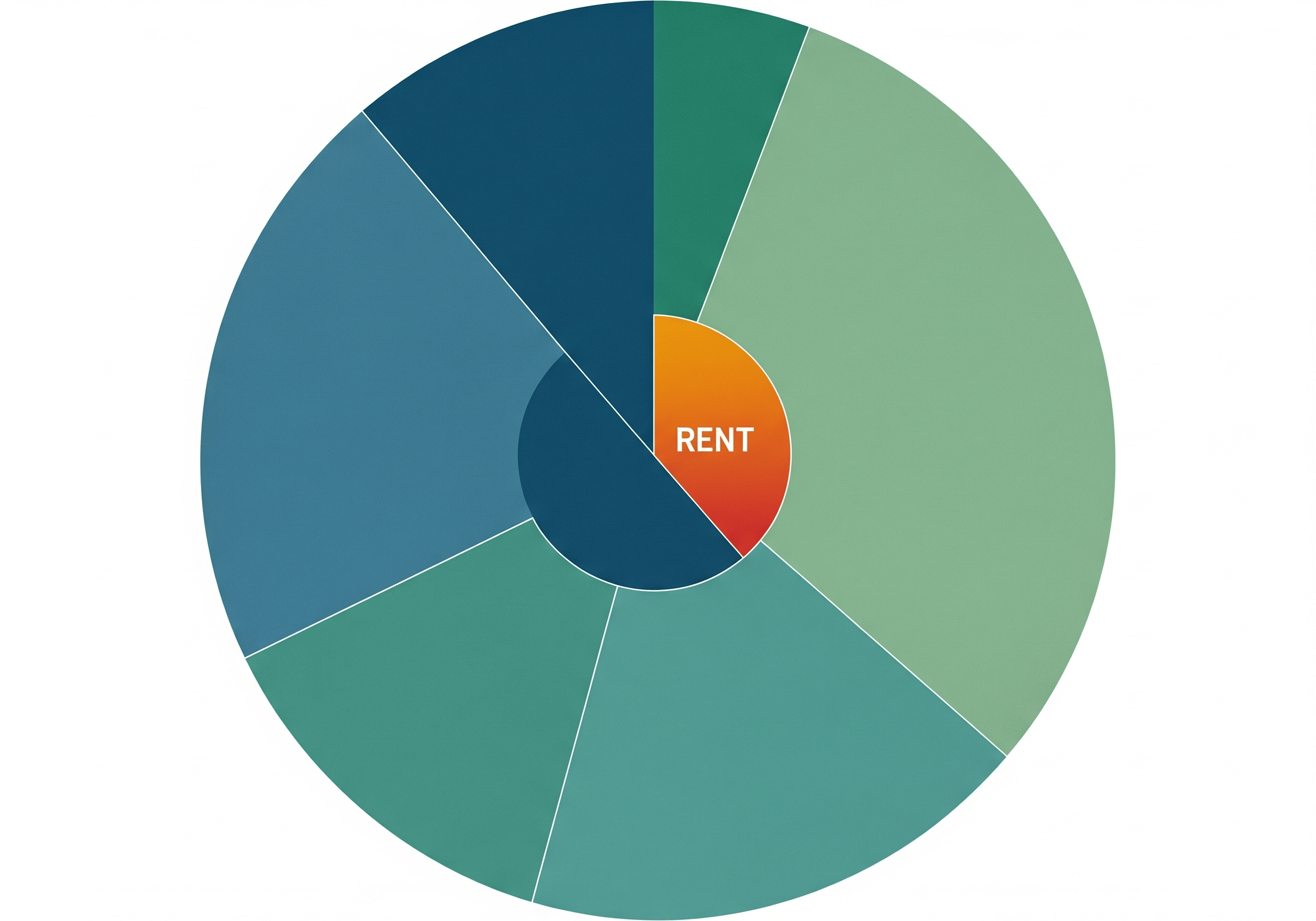Rising rent prices aren't just frustrating-they're starting to feel unmanageable for millions of Americans. If you've ever wondered whether your Rent is "too high," there's a benchmark that can help: the rent-to-salary ratio. It compares your monthly Rent to your gross monthly income and gives you a clear sense of how stretched your finances might be. While the common advice is to keep housing costs under 30% of your income, today's market is challenging that line in cities across the country.
Knowing your rent-to-salary ratio doesn't just highlight a problem; it can help you build a plan to get out of survival mode. That includes evaluating how to save smarter, build credit without relying on credit cards, and eventually reposition yourself financially. This article will explain the ratio, why it's spiking across the U.S., and how you can regain control, even if Rent feels like it's eating your paycheck.
What Is the Rent-to-Salary Ratio?
The rent-to-salary ratio is a simple calculation: Monthly rent ÷ Gross monthly income × 100 = Rent to salary ratio (%). A ratio under 30% is generally considered healthy. That threshold leaves room for savings, debt payments, food, transportation, and unexpected expenses. However, keeping housing under 30% of income has become nearly impossible in many cities, especially along the coasts.
Landlords often use this ratio to screen tenants-many want to see income that's three times the monthly Rent. That 3x rule effectively forces renters to have a rent-to-salary ratio under 33%, or they're at risk of being denied housing.

Rent Burdens Are Climbing Nationwide
The last five years have dramatically shifted rent dynamics. According to Moody's Analytics, the average U.S. rent-to-salary ratio rose from 27.5% in 2019 to over 30% by 2024. That means millions of renters are now considered cost-burdened, spending more than what's financially sustainable to stay housed.
Some metros have been hit harder than others:
- Miami renters spend an average of 38-55% of their income on Rent
- Los Angeles and New York City hover around 35-38%
- San Diego is trending above 30%
- In contrast, Oklahoma City and Toledo, Ohio, sit closer to 16-18%
That divide creates two Americas- those who can stretch their income and those who live paycheck to paycheck to stay housed.
The 30% Rule Is Broken for Minimum Wage Workers.
The original "30% rule" stems from housing guidelines set decades ago. But the math falls apart compared to today's realities, especially for low-income earners.
According to Self, full-time workers earning federal minimum wage must spend nearly 90% of their income on average U.S. rent prices. That leaves barely anything for food, transportation, utilities, or savings. It also means those same individuals face mounting credit risk, missed payments, delayed rent, and rising balances on high-interest cards.
Even in states with higher local minimum wages, the rent-to-salary ratio often exceeds 50%. The result? Renters are forced into unsafe housing, roommates, or massive compromises in quality of life.
When the Ratio Gets Too High, Everything Else Suffers
When your rent-to-salary ratio creeps past 30%, keeping up with the rest of your financial responsibilities becomes harder. Rent takes priority over everything: credit card payments, student loans, savings goals. Credit utilization goes up because you're relying on cards to cover what your paycheck no longer can. Emergency funds shrink or disappear altogether. A high ratio can mean missed payments, rising balances, and growing stress.
This is where Cheers Credit Builder comes in. Instead of falling further behind, you can take one steady step forward. Cheers reports your on-time payments to all three major credit bureaus while building a savings balance simultaneously. Even when you're squeezed for cash, you can still make progress toward a stronger credit profile-and that opens up better housing, lower rates, and more options in the future.
Budgeting for Rent That Works
The traditional 50/30/20 rule recommends:
- 50% of income to needs (housing, groceries, utilities)
- 30% to wants
- 20% to savings or debt payoff
But that breakdown collapses when Rent alone is more than 40% of your income. The solution isn't always to cut "wants"- it's often about rethinking how you approach savings and credit together.
Cheers Credit Builder helps you shift that balance. It lets you build credit history through fixed monthly payments while also saving at the same time. That means you're not stuck between repairing your credit and building an emergency fund. You're doing both, with no membership or administration fees-just a simple, low APR.
Why the 3x Rule Still Matters
Even as rent prices climb, most landlords still rely on the "3x monthly rent" rule to evaluate applications. That means if you're paying $1,500 monthly in Rent, you're expected to earn $4,500 or more—about $54,000 a year.
Here's the catch: the median renter income in the U.S. is closer to $45,000. In many metro areas, even a $70,000 salary can still leave renters spending over 35% of their income on housing.
If your rent-to-salary ratio is too high to meet landlord expectations, boosting your credit can help you stand out in other ways- stronger payment history, fewer late payments, and no delinquencies on your record. That's where a tool like Cheers can give you a head start.
How to Lower Your Rent-to-Salary Ratio
There isn't a quick fix for an unbalanced rent-to-salary ratio, but there are small steps that add up. Increasing your income can help shift the percentage in your favor, even if it's just a part-time job, freelance work, or weekend side gigs. Lowering your monthly debt payments through consolidation or refinancing can free up room in your budget. Some renters try negotiating rent, especially if they've proven reliable tenants.
Cheers Makes It Easier to Break the Cycle
You're not alone if rent takes up too much of your paycheck. But you don't have to accept it as permanent. Start by building credit and savings without needing a credit card or risking more debt. Cheers Credit Builder reports monthly payments to all three major bureaus and puts your money in an FDIC-insured savings account that's yours to keep at the end of the term (minus interest).
There are no setup fees. No hard pull. It's just progress that starts on day one.















